Dragonflight (1991) #1-3 adapted by Brynne Stephens, Lela Dowling, Cynthia Martin, Fred von Tobel from a novel by Anne McCaffrey.
Publishing adaptations in this format (three issue squarebound fully-painted 48 page yadda yadda) had been Eclipse’s signature for the last two years, and this is the last of these adaptations, I think. Eclipse would continue to publish adaptations of Clive Barker short stories, but would otherwise mostly stop doing this kind of thing as they spiralled towards bankruptcy.
But ending (sort of) on a Lela Dowling tip isn’t the worst thing you can do. I love Lela Dowling’s artwork, and Lex Nakashima (of Dreamery conceptual fame) is also somehow involved, so this should be easy sailing, right?
But but… That doesn’t really look a lot like Dowling’s artwork, does it? Granted, I’ve mostly seen her black and white pen and ink work (which is both hilarious and gorgeous), but I wouldn’t have guessed in a million years that she’s doing the artwork here.
Or perhaps she’s like only doing the layouts, and Cynthia Martin is doing the painted artwork? That would make sense.
Brynne Stephens, another name I’ve never heard of before, is responsible for the adaptation. (And it’s spelled Brynne Stephans on the cover of the first issue, so perhaps that goes for everybody?)
Many previous Eclipse adaptations have been plagued by being too respectful to the source material; preserving reams and reams of the text and giving the comic no room to be a comic. Stephans admirably avoids that, but…
… what we’re left with are the bare contours of the story.
I was an Anne McCaffrey fan until way into my twenties. McCaffrey writes irresistibly cute novels, with drama, passion and intrigue (and science fiction), but the books aren’t terribly complicated. I’ve probably read this book more than once, because I remembered the plot pretty well before starting to read this adaptation.
I think that if I hadn’t, I would have found the book pretty much incomprehensible. Things seem to happen so abruptly, with characters being introduced and killed off within pages. There’s virtually no characterisation (and McCaffrey is all about that).
As far as I can remember, this adaptation covers the entire novel. They have 150 pages to do it, and the original novel isn’t very long, but still it feels like I’m reading an illustrated plot synopsis.
(I included the panel above because stuff like that was the major source of irritation while reading the novels: Our Heroine had to spend years as a scullery maid *gasp*, in “filth”. But then, of course, when she becomes queen of the weyrs (don’t ask), she still has all the same charwomen and servants — but they’re extremely happy being charwomen and servants (probably in filth), so that’s OK. Where’s the class struggle!1!)
Aaaanyway. There are so many things that could have just been… left out… Above we see Our Heroine’s pet watch dragonette (don’t ask)… die… and that’s it. It’s an insane way to tell a story.
The artwork varies between OK and pretty crude, with the characters’ heads waning and waxing randomly.
But then! The final two issues are done by Dowling and Fred von Tobel, and they’re a lot better rendered. They still look nothing like Dowling pages, but they’re a lot prettier than the first issue.
The storytelling is still so abrupt as to be absurd. In the page above, the weyr (don’t ask) leader meets with the holders (don’t ask) to negotiate with them. In the fourth panel it’s revealed that the weyr (don’t ask) leader has kidnapped the holders’ (don’t ask) wives. And that’s the last we hear about that sub plot.
And that’s the first time we hear about firestone.
*sigh*
However, the last half of the final issue is pretty coherent. Even if I didn’t know what was going to happen, I probably would have found it pretty exciting. It’s like reading a real comic book with a plot and stuff.
If only they’d done the entire thing in this style.
It’s surprisingly difficult to find any reviews of this adaptation. The McCaffrey book series is stupendously popular, but apparently this adaptation isn’t?
I found this on Goodreads:
As with the first graphic novel, if you aren’t already familiar with the Dragonrider series, you may have some trouble keeping up. The coloring was brighter and the art a bit edgier than the previous graphic novel, but there was no transition from one scene to the next to indicate time passing or any other marker that would make the story flow smoother. It’s a nice homage to the series, but something that fans would probably be more interested in than just a person who had picked it up for the first time.
Eclipse published a collected edition, too, but it seems that the series hasn’t been reprinted since.

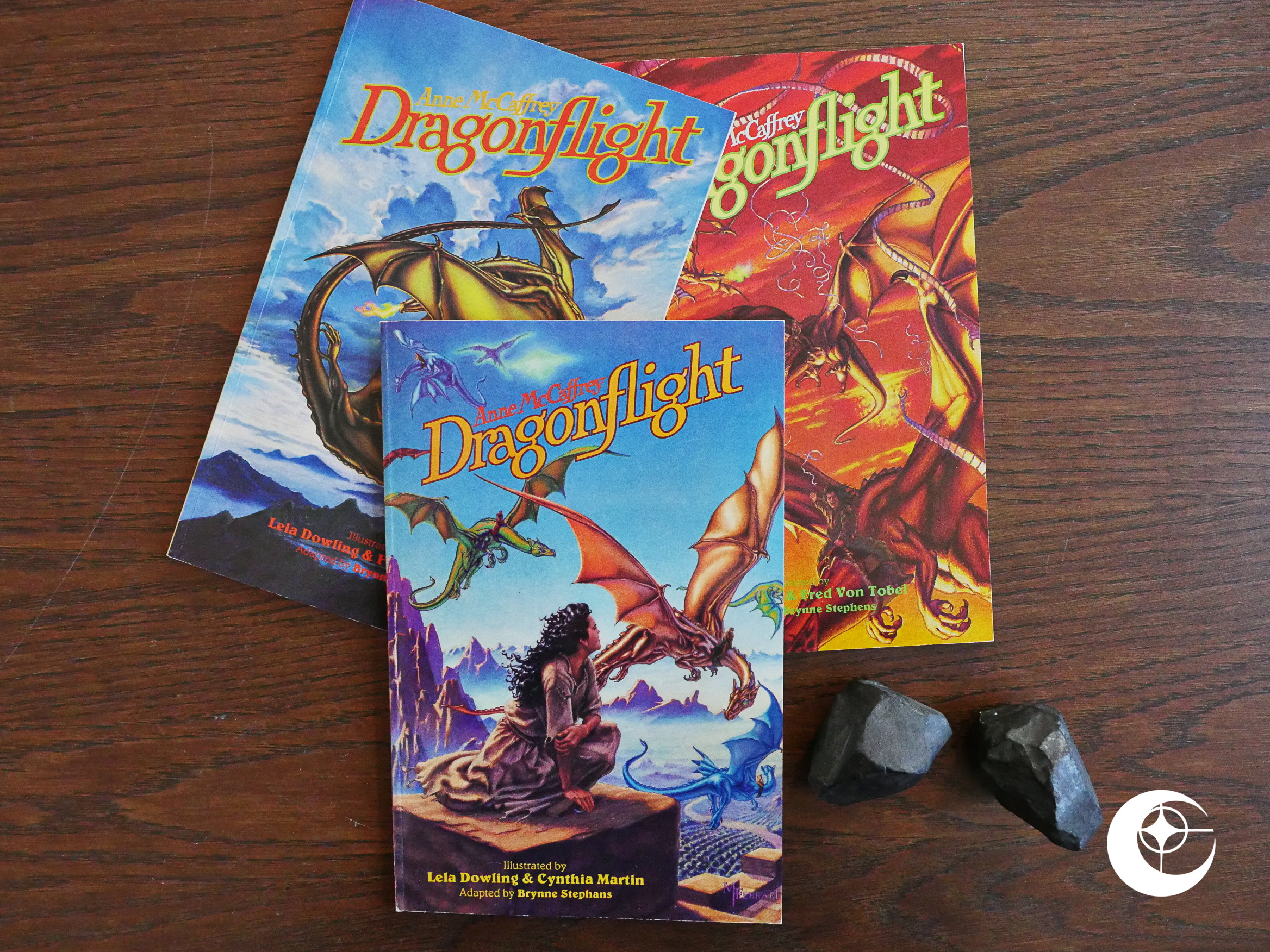
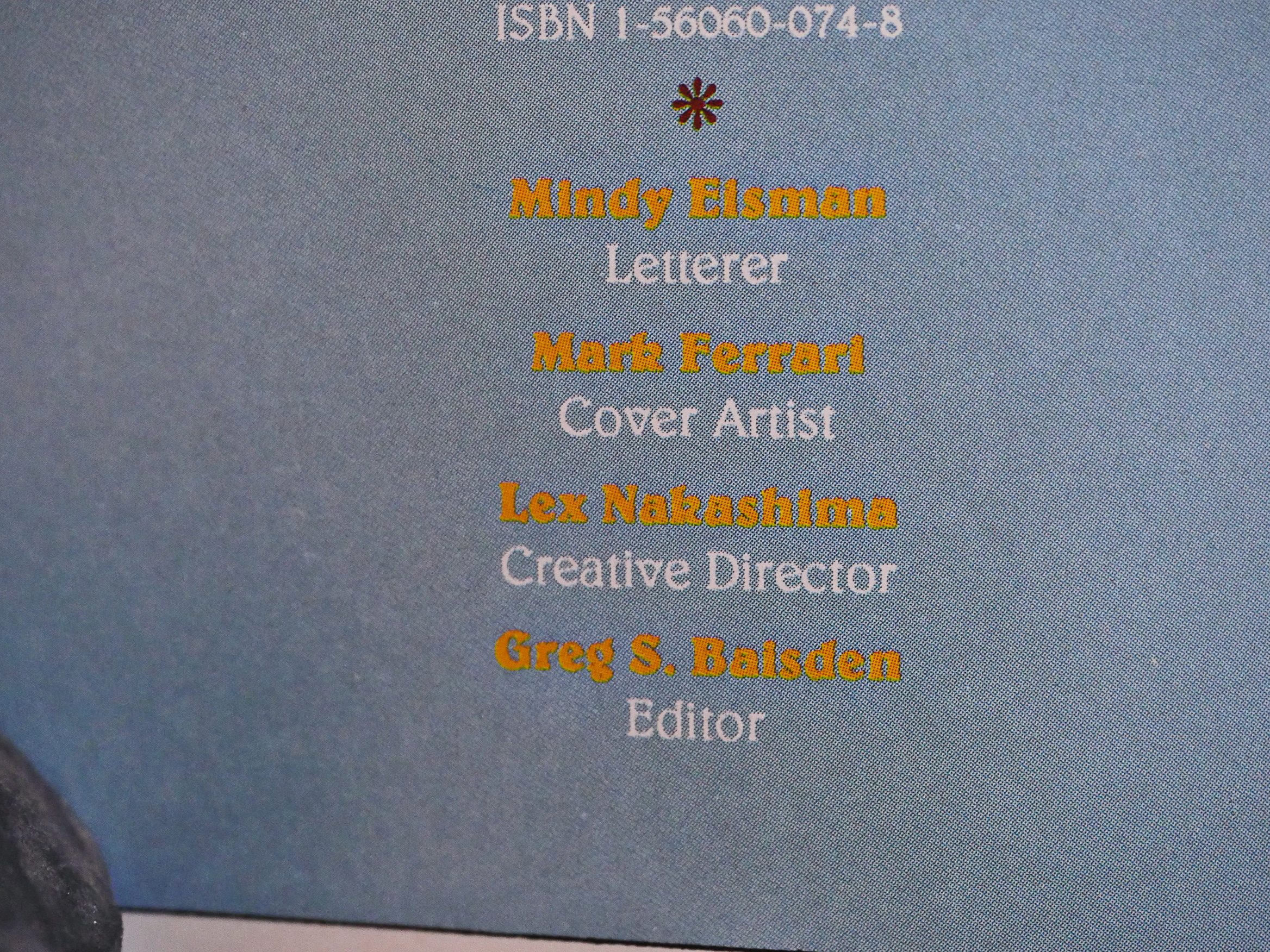
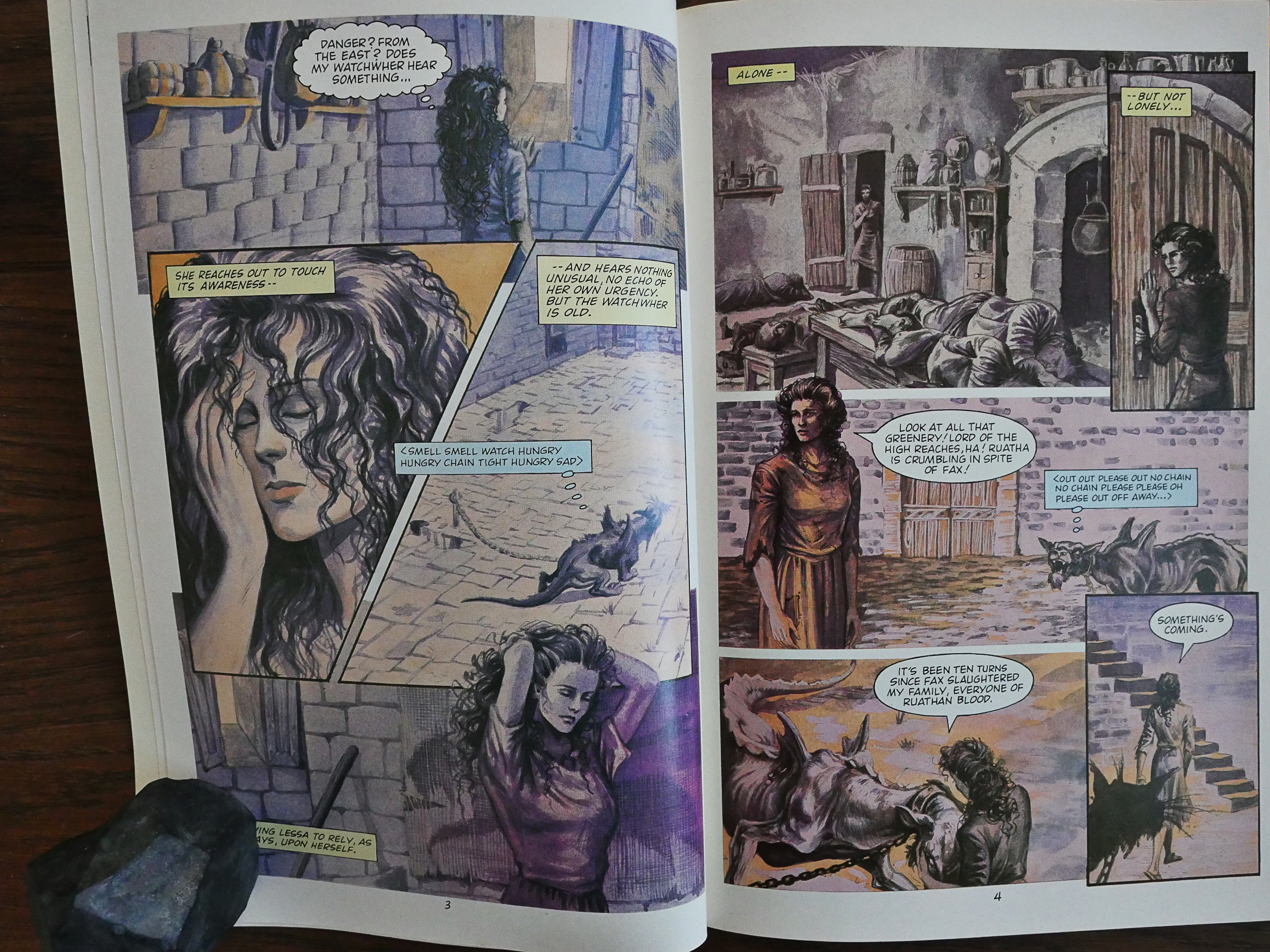
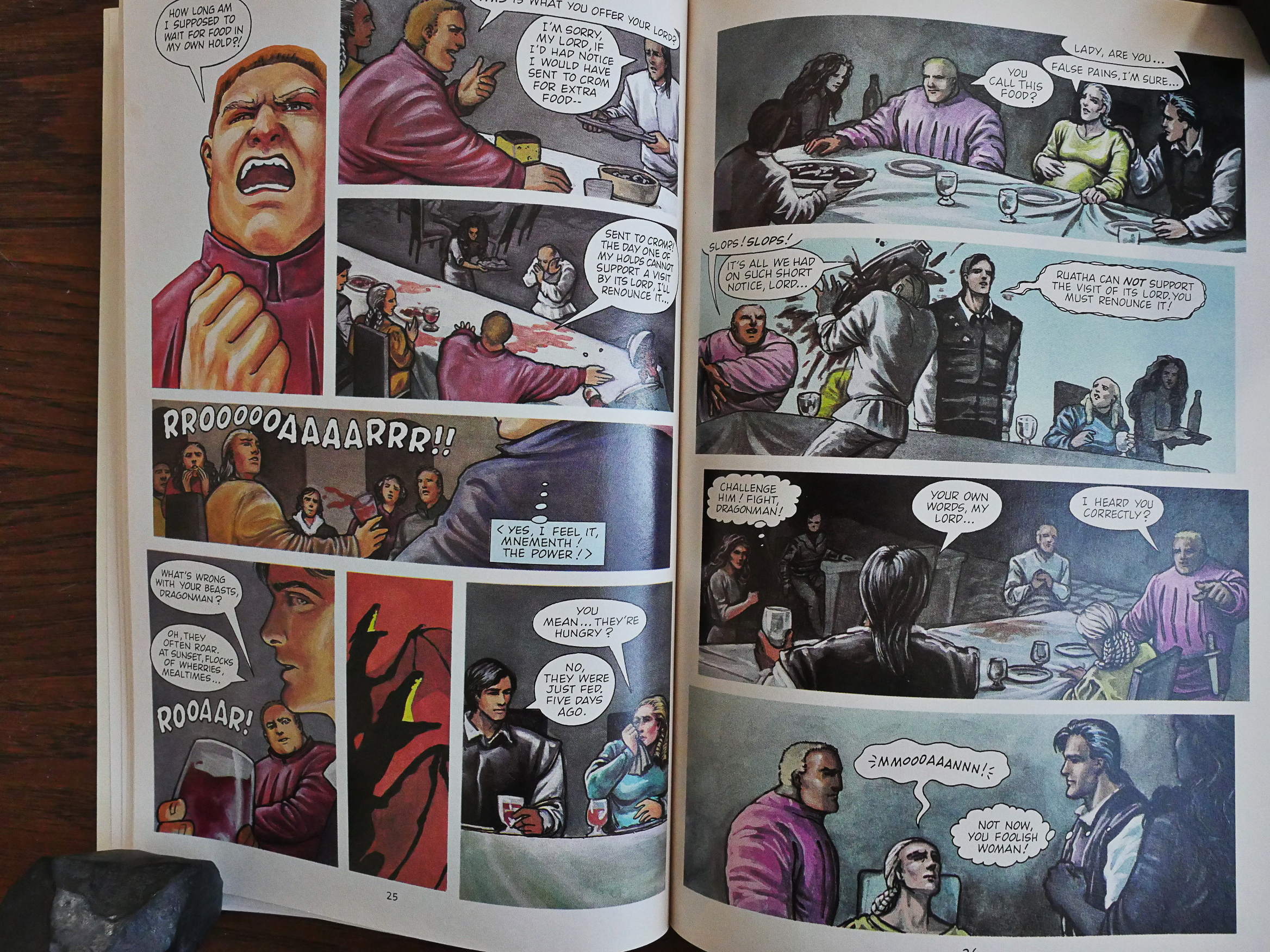
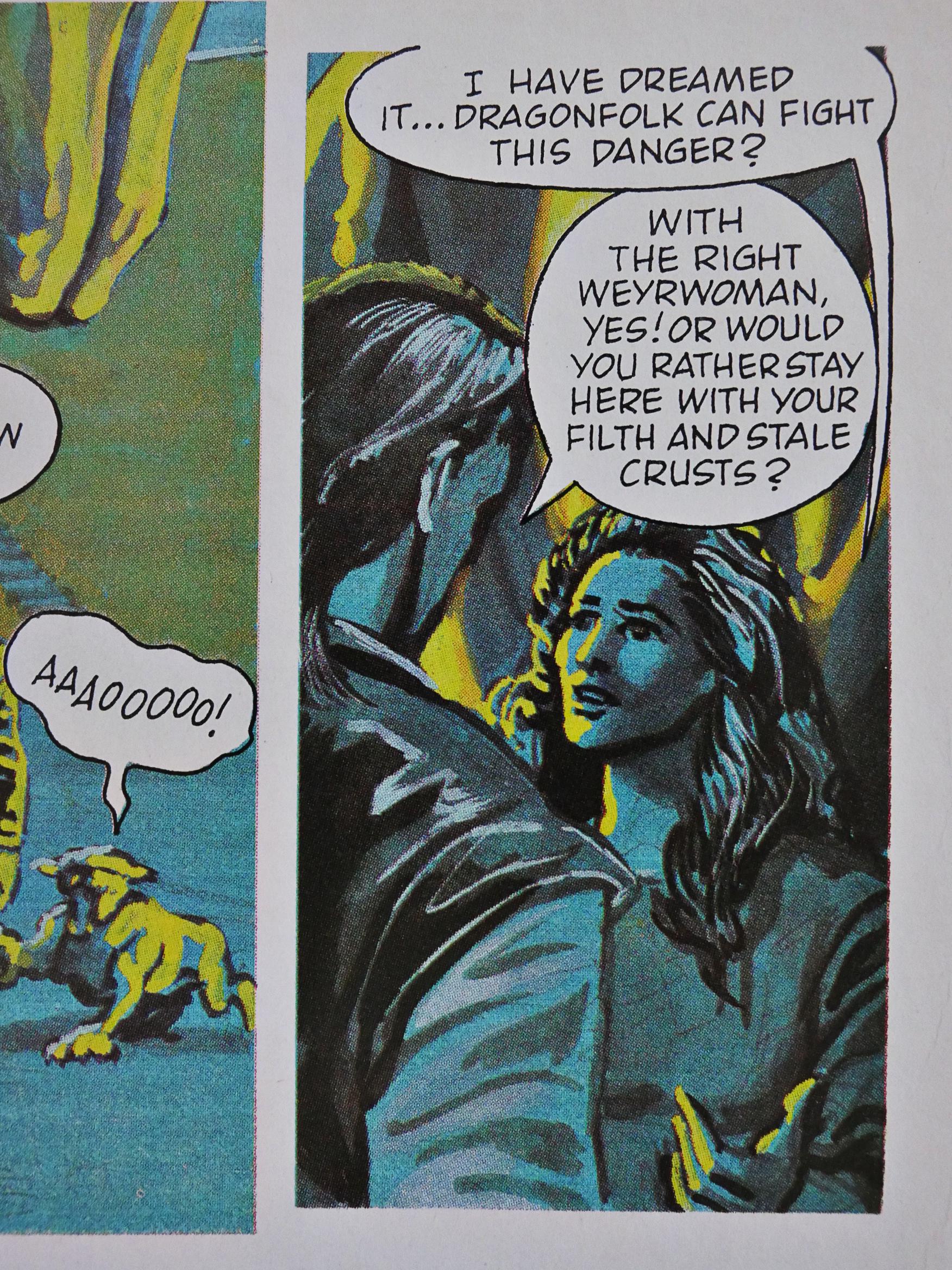
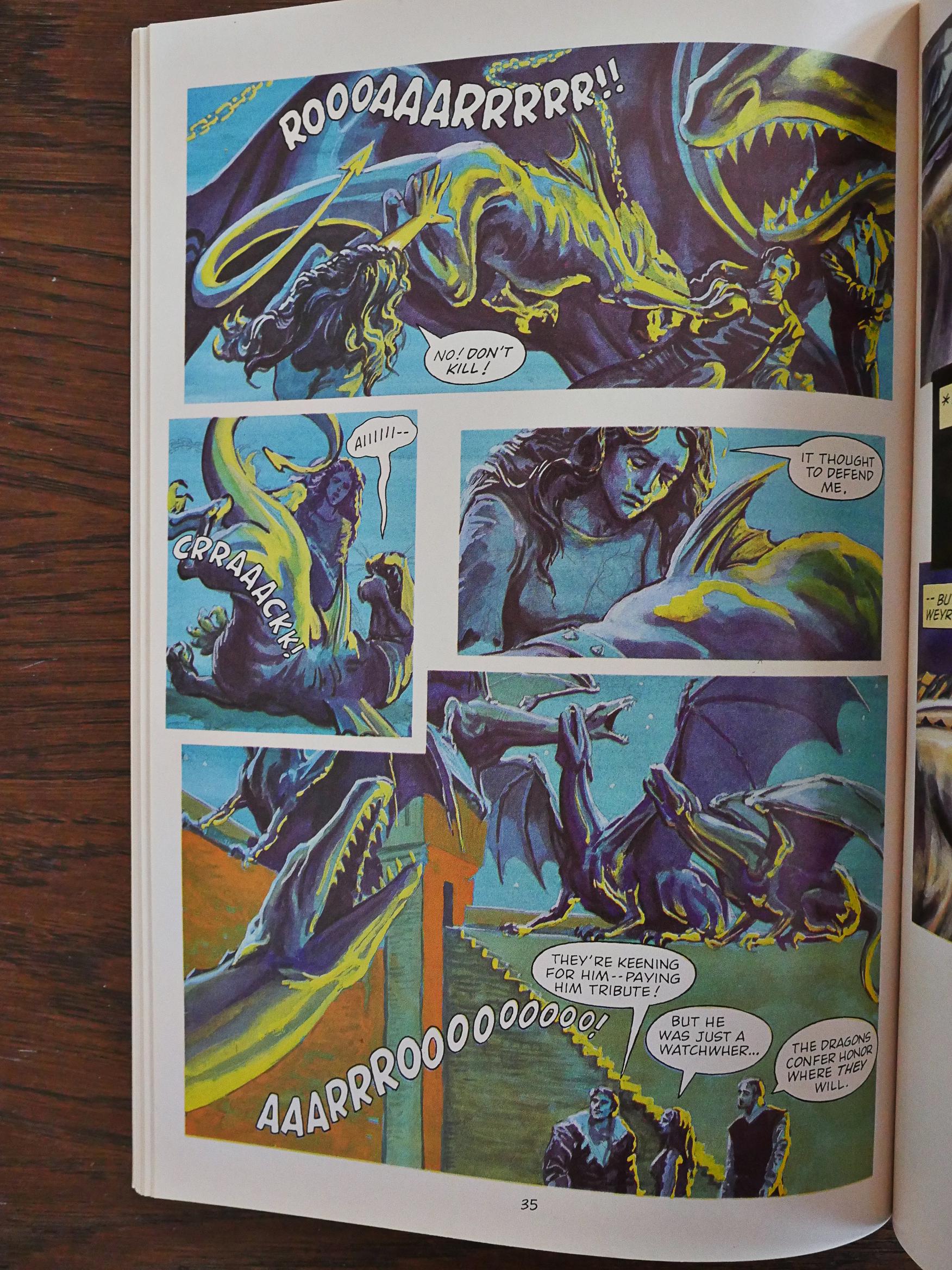
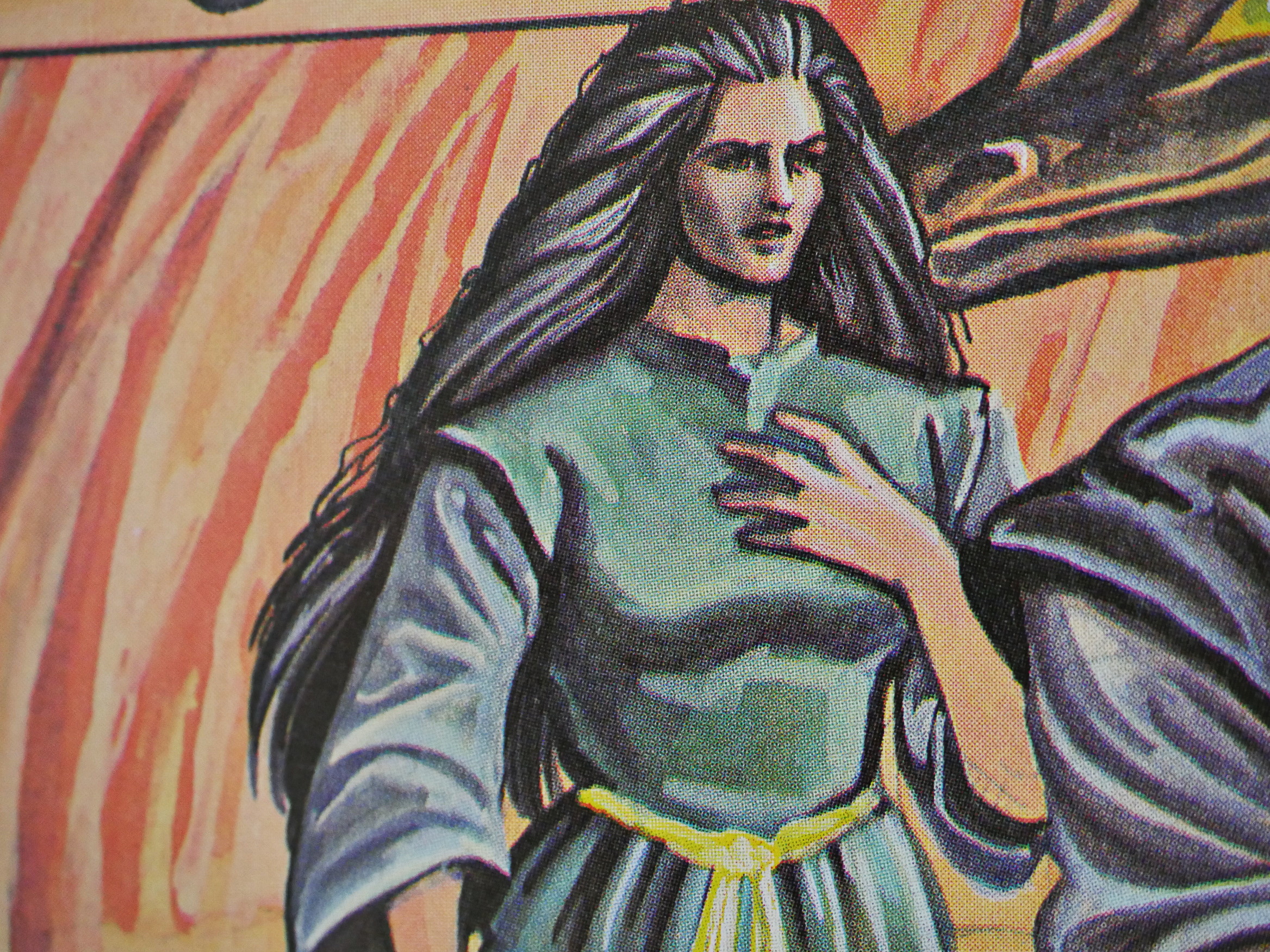
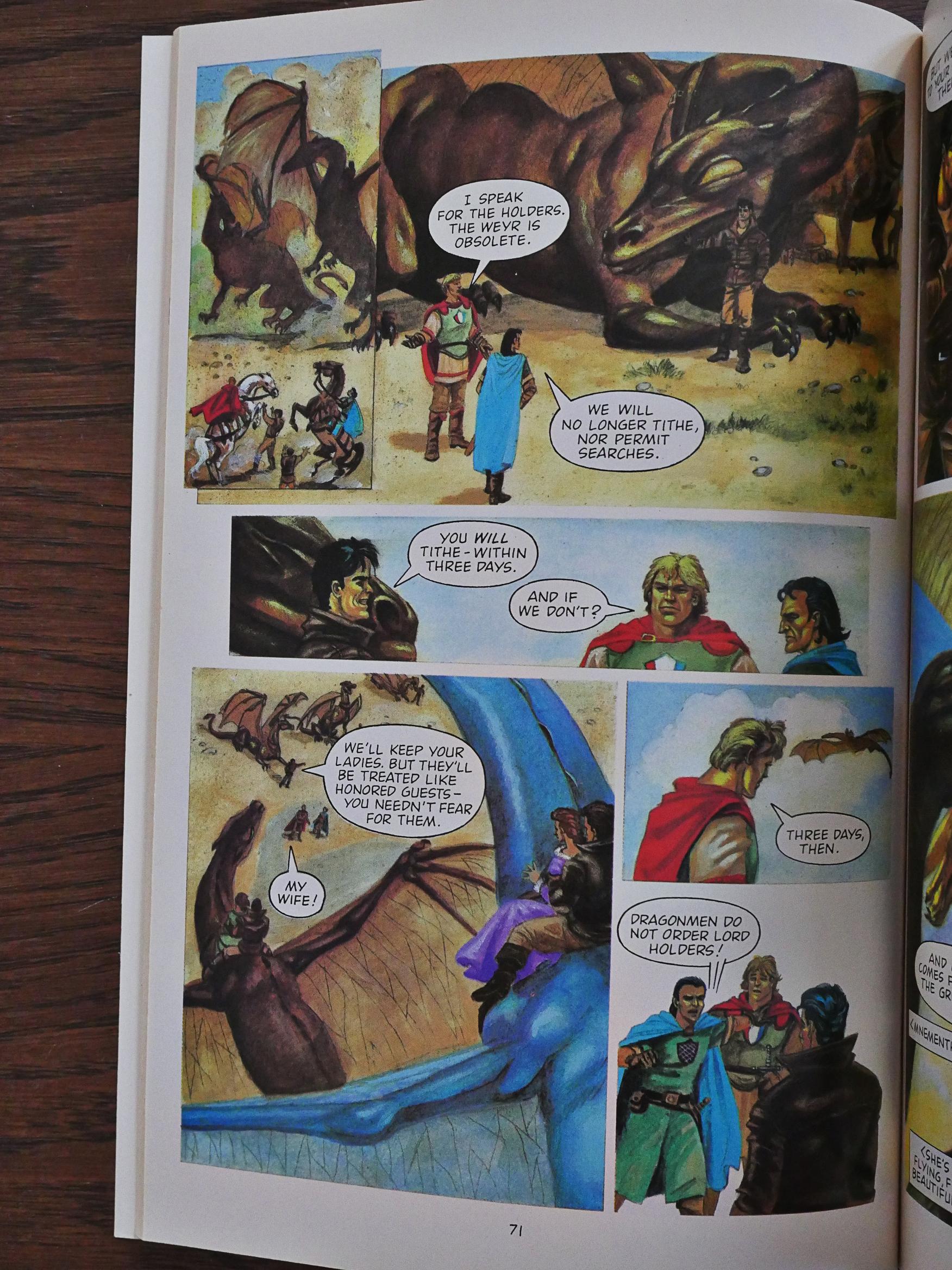
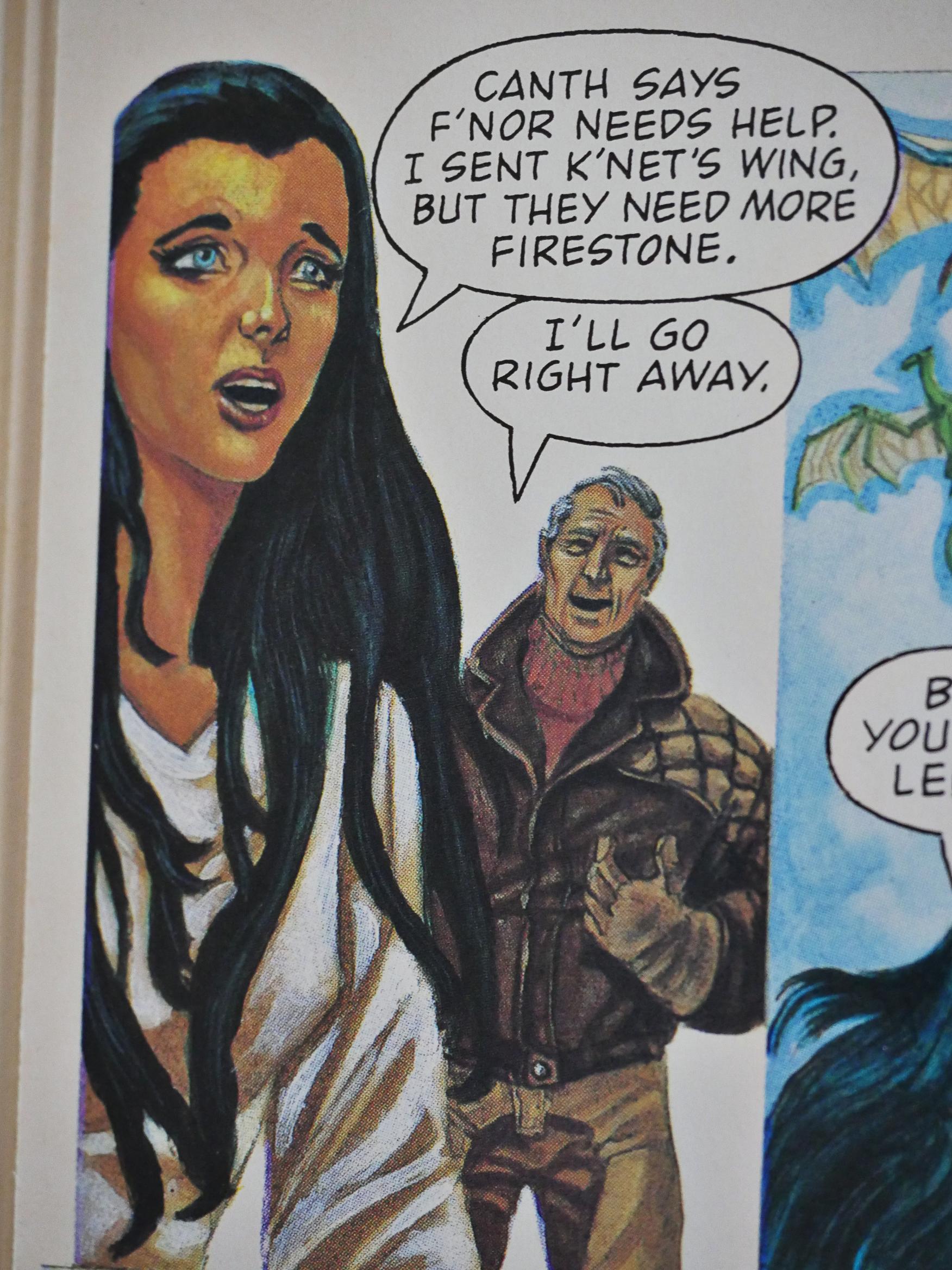
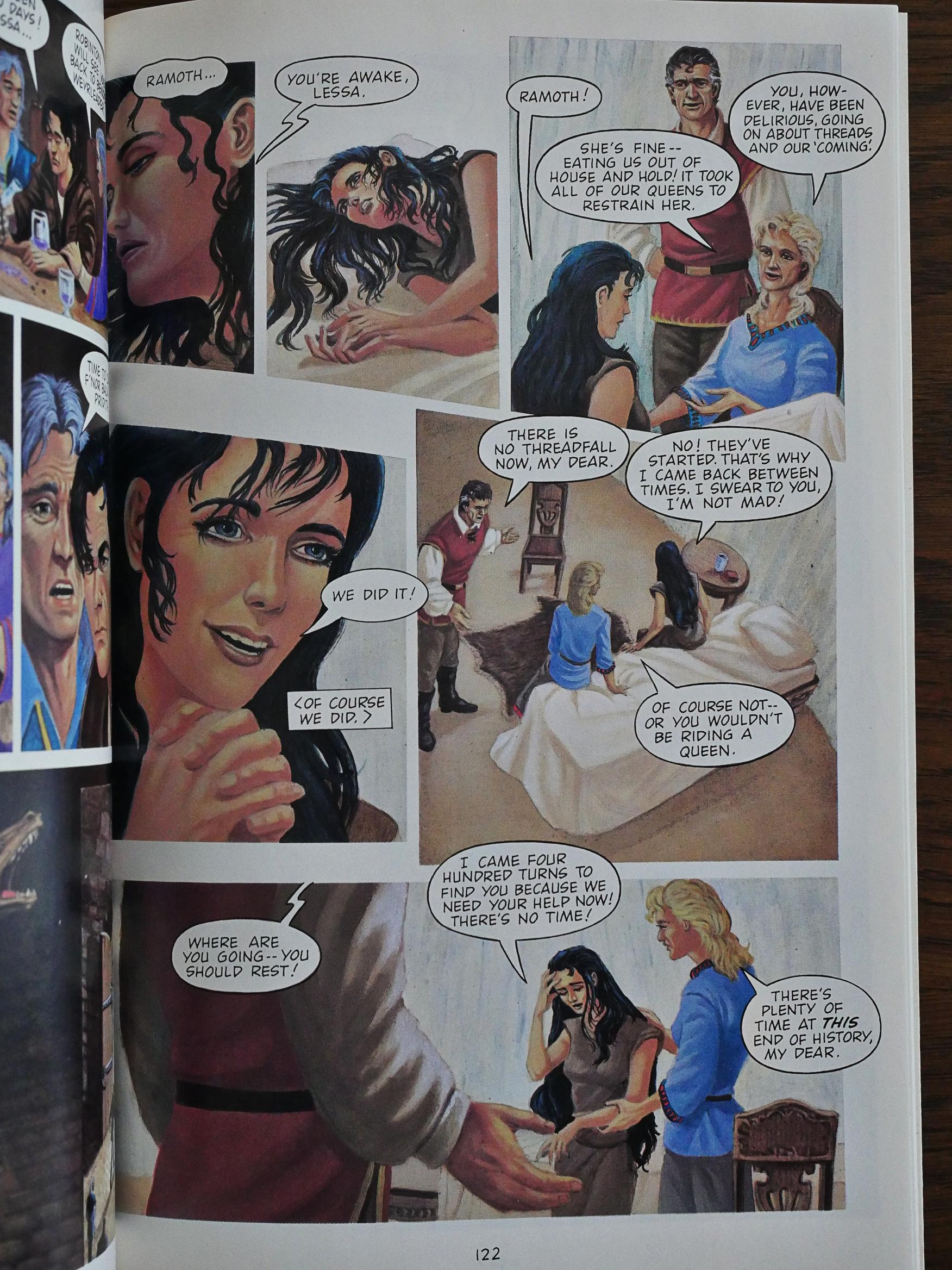
I can confirm that as someone who has never read the books, I for one found this adaptation to be somewhat inscrutable. I was interested enough to read to the end, but thanks to the complete lack of characterization and the choppy plot, it often felt like I was reading something in a language I don’t understand. I’ve finished all three issues and I still don’t know what the hell “thread” is or why everyone has to fight it.